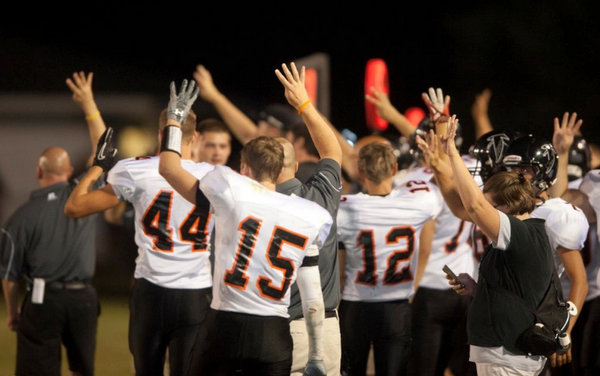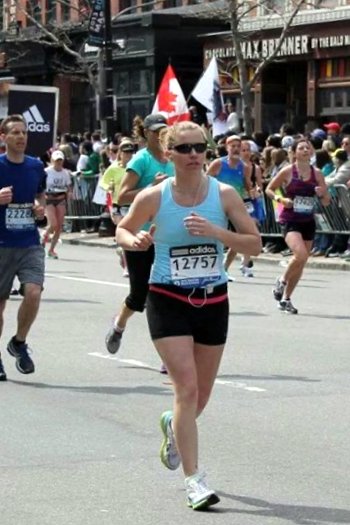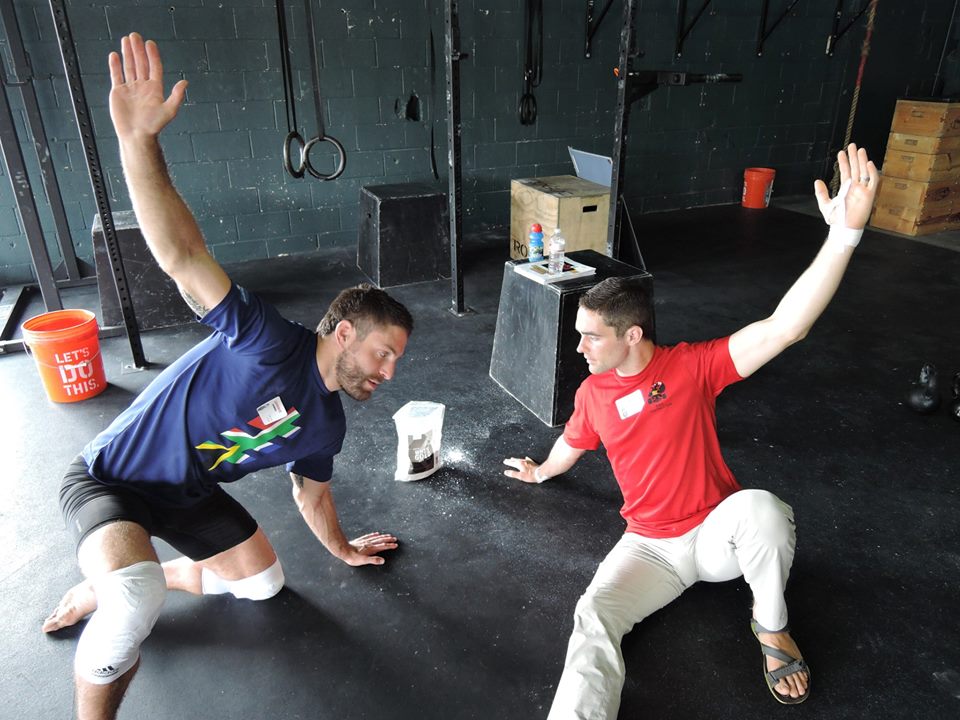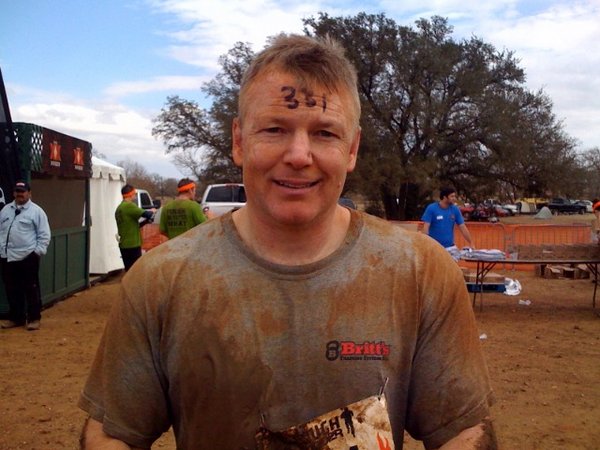
I hate running. I really mean it. I would rather go shopping for furniture with my wife and kids, then run around the block. So when I participated in the 3.5 mile Warrior Dash Challenge, I did not include running as part on my training regimen. I fully believed that I would be able to train for it without actually running. And I was correct. I easily completed the Warrior Dash in about 35 minutes.
Later I decided to take on the 10 mile Tough Mudder. I felt that that the Tough Mudder would be a great way to test my theory that you can run a 10 mile course with no running during the training leading up to it. The last time I put in anywhere near this much mileage was as a young soldier back in the 90’s.
I signed up for the January Tough Mudder on November 27th giving me 62 days to prepare for the challenge. I chose a training protocol consisting of kettlebells and bodyweight exercises. There are so many different training thoughts and programs with the kettlebell and within the RKC. I looked at several different ways to make it work such as VO2 Max, Secret Service Snatch Test and several other tried and true programs, but it came down to swings.
The swing is awesome in its simplicity and ease of use. I like the fact that while not injury proof, swings are pretty safe to do for lots of reps and sets. I felt that the general template of time under load was exactly what I would need. The organizers advised that the course would take at least 2:30 minutes to complete so I needed to add more swing time. I also decided that I would need to use a mix of heavier and lighter kettlebells and most likely double kettlebells to be able to develop the strength and stamina to last the 10 miles. What a great testament to Hard Style and the RKC if I could actually pull off a 10 mile run without any running beforehand.
I began the program swinging double 32kg kettlebells for 30 sec on/30 sec off for 15 minutes. The next day was 15 minutes of get-ups with a 32kg, but not straight from prone to standing. Instead, I worked each piece of the get-up for at least two reps. I was able to make it to the windmill position in the 15 minute time frame. It was my goal to add 5 minutes a week to swings and get-ups. The plan was to hit 45 minutes of each exercise. I trained 4 days a week on Monday, Tuesday, Thursday and Friday
Month 1
Monday/Thursday
FMS Correctives
Double swings started out 15 min a session and increased to 35 min a session over the month
Relax Into Stretch
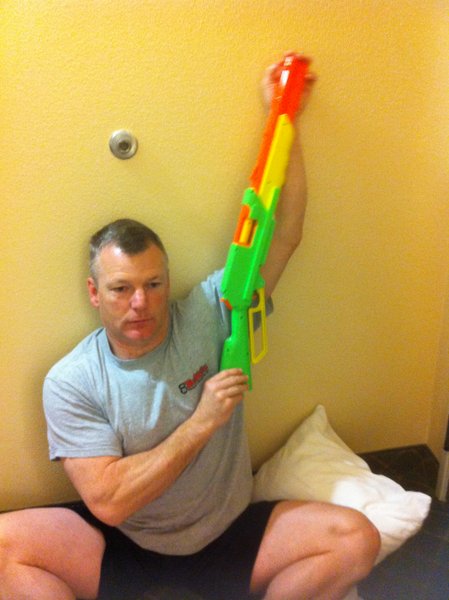
Tuesday/Friday
FMS Correctives
Get Ups 15 min a session increased to 30 min a session over the month
Relax into Stretch
After 4 weeks I reevaluated the program (3 weeks actually, I had a 7 day break due to the flu), How far I had progressed and where I still needed to be. I was up to 35 minutes of double swings with the 32’s and 30 minutes of get-ups with a single 32kg. I felt really good, but I decided that I needed to really push it a little harder. At 4 weeks out, I was a little worried about if I was up to the task, I knew that I was getting stronger, but starting to worry it wouldn’t work. I felt that I was on the right path, but not quite sure where I stood. I was not going to do any training runs, since the goal was not to run before the race.
In looking at the obstacles, distance and what people were blogging about the race, I decided to increase my swing weights to the 40kgs. That would add strength and power that I would be need for some of the 19 obstacles I would face in the Tough Mudder. At this point in my training, it was a big jump and actually, my swing weight was heavier than my own body weight. After making the weight jump, I realized this strategy would also help with mental toughness; because swinging two heavy kettlebells is hard! The first day of the double 40’s lasted about 20 minutes. And I only lasted that long because I refused to quit.
It was during this time that the “10,000 Swings in 21 Days Challenge” started to float around the internet. I thought about it and decided that it fit within my training program/thought process. I figured that more swings would fit the bill. In looking at the numbers, it would take 500 swings a day to reach the 10,000 in 21 days. I knew that I wanted to keep the heavy double swings in the mix and wanted to get as many swings in the 21 Days as possible. Working towards the weight I wanted to hit with double kettlebell swings would probably keep me from 10,000 in 21 days, but I had 25 days of training left in my programming before my 4 days of deloading to be rested. I decided to try and get all of the swings in, but would not sweat it if I didn’t.
The modifications had me swinging almost every day for up to 45 minutes a session. I knew I could not keep up the heavy doubles for 21 days so I changed my schedule to have a medium, light and play weight during the week. The play weight was whatever I felt like messing with on that day for lots of reps. My training week was typically: heavy double swings on Tuesday, Thursday, Saturday and either two hand swings with the Beast or double 32 swings on the other days. The “play” day was exactly that, no real plan of action. Some days it was throwing out a bunch of kettlebells; 48kg, 40kg, 32kg and 24kg and doing 10 swings with each for multiple sets until I was tired., other days it was swings with the 24kgs’s. One thing I did find from practicing every day was that my swings got better, a lot better.
I ended up with 8500 swings on the 21st day and 10,000 by the 24th.
Month 2
Monday/Wednesday/Friday
FMS Correctives
Two-handed or double swings 300-500
Indian Clubs as active recovery
Tuesday/Thursday/Saturday
FMS Correctives
Heavy Double swings 200-500
Indian Clubs as active recovery between each set
Pull ups for 3-4 sets of 3-5
How did it work out for me? I completed the Tough Mudder in 2 hours 45 minutes. It was a hard race, with plenty of obstacles to climb over, crawl under and swing from, and lots of running. But the running was actually the easy part. I did not realize how much swimming we would have to do and the massive amounts of swings dropped my body fat to under 8% and I added 10lbs to my bodyweight. It made it hard to float and the cold water really sucked the heat out of me. It was interesting, I read the 4 Hour Body by Tim Ferris the week of the race and found his section on running a marathon advocated interval training. It made me realize that I was on the right path with this training program.

What would I do differently? I would continue with the swings, but keep the get-ups in there to improve core and rotational strength. I had no issues with the posterior chain after the race. My frontal core however, was pretty sore for a few days afterward. I think that if I had kept the get-ups in the mix, I would not have hurt so badly. It stemmed from climbing, monkey bars and helping boost others over obstacles. The grind power derived from the get-ups would have helped in all of those activities.
What is the summary of this little experiment? It is possible to train for a mid-range running event without running in training. Will you have record shattering times? Most likely not, but the goal was just seeing if it could be done. I now know that it can be done. I see a few ways to improve, if I chose to do it again. I would keep the swing volume high, add more get-ups and I would add clean and jerks to the program. The clean and jerks would help develop power strength and some mental toughness.
